
Clunies Ross Technology Innovation Awards
The Clunies Ross Technology Innovation Awards recognise contributions by dedicated individuals, or teams, who have shared their vision and knowledge with others to apply technology for the benefit of Australia, and beyond.
The selection criteria for the Clunies Ross Technology Innovation Awards are:
- A significant contribution to the advancement of industry and/or the community and/or the environment through the application of science, technology and engineering for the economic, social and/or environmental benefit of Australia.
- Evidence of outcomes and impacts of the technology-based innovation in Australia.
- Promotion of innovators and contribution to community awareness of technology-based innovation and evidence of mentoring the next generation of technology innovators.
Entrepreneurship, impacts and outcomes, and advancement are to be addressed in the nomination.
Nominees could be entrepreneurs, researchers or developers in a public funded research organisation, university or a private company.
Open to up to three individuals or small teams (with no more than three individuals per team).
More information can be found in the Award Guidelines below.
ATSE AWARDS CLUNIES ROSS TECHNOLOGY INNOVATION AWARDS Guidelines 2024
ATSE AWARDS CLUNIES ROSS TECHNOLOGY INNOVATION AWARDS Referee Report 2024
History of the Clunies Ross Awards
Founded in 1959 to perpetuate the memory of Sir Ian Clunies Ross, the Ian Clunies Ross Memorial Foundation promoted the development of science and technology in Australia’s beneficial interest.
In November 2002, the Foundation was brought under the Academy’s umbrella, securing the long-term future of the Awards. It became known as the Clunies Ross Foundation.
The Foundation established the Clunies Ross National Science & Technology Award in 1991.
The Foundation was disbanded in 2004 and the Awards are now administered by the Academy.
Read more about the history of the Clunies Ross Awards.
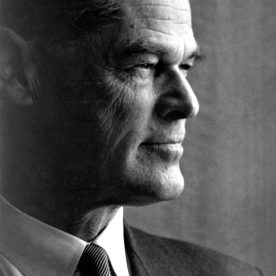
About Sir Ian Clunies Ross
Sir Ian Clunies Ross was a giant of Australian science.
Born in 1899, he was a visionary leader of our scientific community and inspired all with whom he worked. He had a passion for science and a talent for administration, a rare combination of skills which he applied in the service of many scientific organisations.
Best known for his pioneering work in veterinary science, he waged a lifelong war against ignorance and fear, leaving us with an enduring legacy upon which we can build. As a scientist he greatly advanced parasitology and disease control in animals and spanned the gap between Eastern and Western scientific cultures.
As an administrator he was Foundation Chief of CSIRO’s Division of Animal Health and, in 1949, Chairman of the new CSIRO. As a communicator he was a ceaseless champion of science and technology – understanding that the forces of ignorance imperil the application of science to the advancement of humankind. Sir Ian died suddenly in 1959.
Photo credit: CSIRO
Past winners
The Clunies Ross Technology Innovation Awards recognises contributions by dedicated individuals, or teams, who have shared their vision and knowledge with others to apply technology for the benefit of Australia, and beyond. In 2023, the previous Entrepreneur, Innovation and Knowledge Commercialisation categories were combined into a single prize.
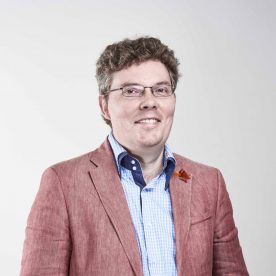
2023 winner
Dr James Tickner
Dr James Tickner’s invention, PhotonAssay™, uses X-ray technology to detect gold, silver, copper and other elements in mineral ores.
In the mining industry, quantifying the concentration of a target element in a sample is crucial. In developing PhotonAssay™, James overcame many of the safety, environmental and efficiency problems of older, more harmful and hazardous detection methods.
PhotonAssay™ technology counts atoms inside rocky samples in a matter of minutes, whereas previous assaying processes could take weeks. Furthermore, the innovative approach minimises health risks for operators, and eliminates toxic waste, while also halving energy consumption and carbon emissions compared to existing methods – making it safer for workers, and better for the planet.
James developed PhotonAssay™ while working at CSIRO, and left his research role to commercialise the technology. He co-founded the mining technology start-up Chrysos Corporation Ltd, where he continues to lead the science, engineering and product development teams. In just six years, as Chrysos’ Chief Technology Officer, James has overseen the growth of PhotonAssay™ from its first functional unit to a fleet of commercially operating units across three continents running approximately 300,000 samples per month.
Past winners
The Clunies Ross Entrepreneur of the Year Award (2017-2022) recognises an individual who has played an integral role in the discovery and translation of a major technology-based product or service that has led to financial success and demonstrated impact for Australia, and in which they have personally had a significant input in the inventorship and/or development of the technology.
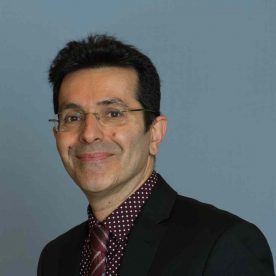
2022 winner — Entrepreneur of the Year
Professor Saeid Nahavandi FTSE
Professor Saeid Nahavandi is recognised internationally for his work on intelligent systems and simulation technologies, including haptics. Haptic technology creates an experience of touch by applying forces, vibrations, or motion to the user.
Saeid’s research has been translated into defence and civilian applications. He is particularly well known for his brainchild, the universal motion simulator, a world-first haptically-enabled robotic motion platform that functions as a vehicle or aircraft simulator for contested environments.
The simulator allows users to experience situations in their entirety, including full range of motion that can be adjusted to suit many forms of training that aren’t possible in reality. Training using advanced virtual reality technology is useful for engineering, military, medicine, and education applications.
Saeid heads Deakin University’s Institute for Intelligent Systems Research and Innovation. He consults to government, and civilian and defence industry in Australia, the USA, and Europe and has previously consulted to NASA and NATO.
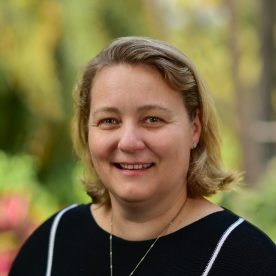
2021 winner — Entrepreneur of the Year
Adjunct Professor Leanne Kemp
Leanne Kemp is a leading figure in the technology sector and recognised internationally as an innovator, entrepreneur and leader.
She is the founder and Chief Executive of Everledger. At Everledger, Leanne Kemp created an independent platform leveraging blockchain technology which provides a secure and permanent digital record of an object’s origin, characteristics and ownership across many global supply chains and industries. She invented and patented the technologies which have proven to be a game changer for Everledger, impacting a number of industries helping to build confidence in claims of origin, legality, environmental protections and human rights.
Leanne Kemp has also just completed two terms as Queensland’s Chief Entrepreneur where she shared her experience and knowledge with thousands of start-up businesses and SMEs. She is an appointed advisor for the OECD, the United Nations, the World Economic Forum and a Director for the World Trade Board.
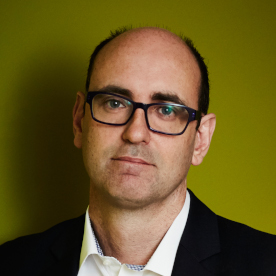
2020 winner — Entrepreneur of the Year
Mr Mark Sullivan
Mark Sullivan is Founder and Managing Director of Medicines Development for Global Health, a biopharmaceutical company developing medicines based on need, not profit.
Mark recognised the importance of Moxidectin – an intestinal worm treatment for domesticated animals – for treating neglected infectious diseases in humans. Mark found funding, re-established manufacturing, and won approval for human use.
In 2020, additional human trials with more than 13,500 people will commence to demonstrate Moxidectin’s importance and win approval to use the drug to treat and eliminate onchocerciasis, or river blindness – the second most common cause of blindness due to infection.
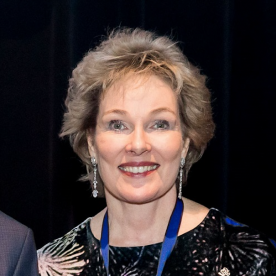
2019 winner — Entrepreneur of the Year
Dr Jane Oppenheim, Ego Pharmaceuticals Pty Ltd
Dr Jane Oppenheim has contributed to driving growth in high-technology manufacturing jobs in Australia by using better science in products and better efficiency in production.
She enables Ego Pharmaceuticals to improve people’s lives through the science of healthy skin with products that are based on strong science. This, in turn, has driven growth in demand from consumers and patients across 24 nations, with a compound average annual growth rate of 12 per cent over 30 years.
To match this growth, Dr Oppenheim has led continuous growth in production capacity in the world-class pharmaceutical manufacturing plant that she runs, with 10 expansions, most including installation of complex new equipment. The current production plant in Braeside, Victoria, is now fully equipped with state-of-the-art high-technology machines.
In 2016, Ego Pharmaceuticals won the Victorian Exporter of the Year award.
Dr Oppenheim is committed to treating and preventing skin problems. Some skin problems may appear minor, but improvements can be life-changing.
For example, QV Skin Lotion used twice daily reduces skin tears in the elderly in aged care homes by up to 51 per cent. In one typical case, 40 per cent of residents experienced skin tears, with the mean cost of treating one skin tear estimated as $488. Reducing skin tears significantly improves lives, while significantly reducing costs of aged care facilities.
The QV Intensive Moisturiser helps improve eczema for children; it in turn reduces their hospital stay and gets them back to school and friends faster.
Dr Oppenheim is now leading Ego’s transformation to industry 4.0 – to have all machines connected, enabling interconnectivity and transparency of reporting.
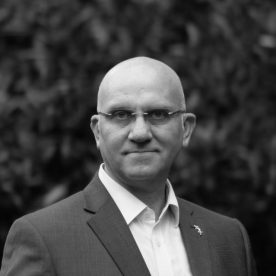
2018 winner — Entrepreneur of the Year
Dr Erol Harvey FTSE
Scientist, educator and entrepreneur Dr Erol Harvey has made outstanding contributions to Australia through the world-leading microfluidic engineering company MiniFAB, his distinguished academic career and his unwavering support for research commercialisation and entrepreneurship.
In 2002, he co-founded the export-oriented business MiniFAB, which is now a world-leading provider of custom-designed and manufactured microfluidic and medical devices. Capable of rapid prototyping and product commercialisation, MiniFAB delivers custom solutions into diverse markets, including medical devices, diagnostics, food packaging and aerospace.
Its client base includes multinational companies, venture capital-funded start-ups, international medical device companies, and university spin-offs from around the world.
He also formed the Small Technologies Cluster, an incubator supporting researcher access to MiniFAB’s facilities and providing dedicated infrastructure to accelerate the commercialisation of new high-value medical device technology.
In 2011, MiniFAB was awarded the inaugural “Enabling Technology Company of the Year”. In recognition of his achievements, Dr Harvey was named Enabling Technology Entrepreneur of the Year by the Victorian Manufacturing Hall of Fame.
Dr Harvey has been committed to the commercial and scientific development of micro and nano technologies for 30 years. For this service, he was elected a Fellow of ATSE in 2006 and is a frequently invited to speak at events on innovation, commercialisation and university-industry collaboration.
Dr Harvey worked as an engineer in Oxford, UK, after gaining a PhD in Plasma and Laser Physics from Monash University. He returned to Australia in 1999 to become a Professor of Microtechnology at Swinburne University – a position he held for more than a decade.
He has also served on a number of committees, including the Micro and Nano Technology Commercialisation and Education Foundation and the Australian Federal Government’s Future Manufacturing Industry Innovation Council.
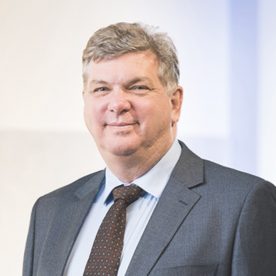
2017 winner — Entrepreneur of the Year
Professor Andrew Wilks FTSE
Professor Andrew Wilks has made key contributions to the development of a successful new drug for the treatment of haematological malignancies such as idiopathic myelofibrobrosis, a highly malignant condition caused by the inappropriate activation of JAK2, a cellular enzyme Wilks discovered in 1989.
The story spans 25 years, from Wilks’ discovery of this important cellular enzyme, through to the design and development in 2005 of a new drug, CYT387 (now known as Momelotinib) by a team led by Wilks, that is now being used to treat patients with this and other diseases.
It is a seamless path of discovery and invention, and a prime example of an Australian scientific discovery (viz the discovery of the JAK family of tyrosine kinases by Wilks while at the Ludwig Institute for Cancer Research, Melbourne) through to its ultimate commercialisation.
In this process, Wilks had many roles. He was the academic scientist who discovered the molecular target and published the paper naming the family of related enzymes. Wilks and his team subsequently characterised the role of these proteins in the intracellular signaling of the hematopoietic and the immune systems.
Wilks continued as an inventor/co-inventor of a brace of new applications of the JAK-related technology, publishing a number of patents relating to these proteins and to small molecule inhibitors of the enzymatic activity of these proteins.
Finally, Wilks is an entrepreneur. In 1997, he left the Ludwig Institute and founded (and was CSO and CEO of) the Australian biotech company, Cytopia, wherein all of the drug discovery and early clinical phase research was done.
The continuity of impactful contributions, from discovery of JAK2, through to the development of the drug, and its final successful clinical testing, represents an achievement of similar magnitude to that realised in a number of other Australian success stories, such as Relenza and GM-CSF. At every stage, Wilks was the linchpin and main driver of the delivery of the JAK Project from discovery to early clinical development.
With respect to “going the extra mile”, there is plenty of evidence for this in the usual trials and tribulations of starting a biotechnology company and developing a new drug. In 1997 Wilks gave up a well-funded and high-profile academic career at the Ludwig Institute to start Cytopia, and mortgaged his house on at least two occasions to “keep the dream alive”.
The ultimate success of the science, however, is demonstrably the result of the devout application of Wilks and his collaborators/co-workers to the development of this drug. This has been a 25-year struggle, comprised in equal parts, of both soaring highs and crushing lows, to the ultimately successful development of Momelotinib, an important new drug for the treatment of idiopathic myleofibrosis and pancreatic cancer.
The Clunies Ross Innovation Award (2017-2022) recognises an individual or small team responsible for the discovery, development and adoption of a technology that has significantly improved societal or industry capabilities.
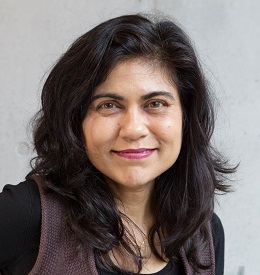
2022 winner — Innovation Award
Professor Veena Sahajwalla FAA FTSE
Professor Veena Sahajwalla is known globally for inventing a patented Polymer Injection Technology known as Green SteelTM where coke and coal are partially substituted with waste rubber tyres in electric arc furnace steel making, not only delivering a more environmentally friendly outcome but improving and enhancing the steel making process.
Veena is the Director of the UNSW Sustainable Materials Research and Technology (SMaRT) Centre creating innovative solutions for the world’s biggest waste challenges. The Centre is now doing its next generation of Green Steel research involving using additional waste resources usually destined for landfill, including coffee grounds and problematic plastics, as coke and coal alternatives that also contribute hydrogen to further enhance the steel production process.
Veena and SMaRT are also commercialising their breakthrough MICROfactorieTM Technologies that transforming diverse wastes – including textiles, glass and plastics – into value-added products such as high-grade filaments for 3D printing and Green Ceramics for the built environment. MICROfactorieTM. The ceramics technology was one of only ten innovations globally featured at UNESCO’s 2020 Netexplo Forum.
A hallmark of Veena’s stellar career has been her ability to collaborate with a wide range of industry, government and research partners, resulting in many breakthroughs that are fit for purpose and are being commercialised to meet real world challenges.
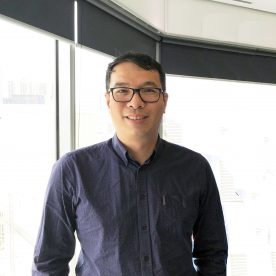
2021 winner — Innovation Award
Professor Alan Wong
Professor Alan Wong is an inventor and innovator whose new approach to identifying fire risks in power networks has spawned an international business.
Professor Wong designed and developed Early Fault Detection technology which is able to detect and locate potential threats to power grids, allowing these threats to be addressed before the grid fails, protecting against potential catastrophic outcomes.
Since being patented and introduced to the market, the technology has been taken up by companies in Australia, Asia and North America. It’s detected numerous failing high-voltage conductors and prevented potential bushfires and electrocution.
Ninety-five per cent of the Early Fault Detection product is manufactured locally in Victoria, generating high-tech and advanced manufacturing jobs.
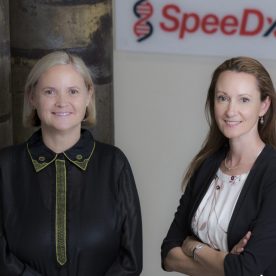
2020 winner — Innovation Award
Dr Alison Todd and Dr Elisa Mokany
Doctors Alison Todd and Elisa Mokany are dedicated to fostering entrepreneurship and innovation in Australia.
Together, Dr Todd and Dr Mokany created a new molecular ‘lego’ that is opening the door to personalised clinical diagnostics.
They’ve founded a successful company – SpeeDx – to roll out the technology which helps doctors choose personally targeted treatments.
They combine a profound, deep knowledge of molecular DNA and RNA-based detection – with flair and entrepreneurship, to develop their own inventions into fully-fledged products made in Australia and sold nationally and around the world.
Their products are fundamentally changing the way in which doctors work and patients heal.
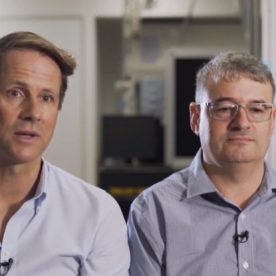
2019 winner — Innovation Award
Professor Thorsten Trupke FTSE and Adjunct Associate Professor Robert Bardos
The development and commercialisation of photoluminescence imaging by Professor Thorsten Trupke and Adjunct Associate Professor Robert Bardos is a significant milestone for the photovoltaics research community and the solar cell/module manufacturing industry, both in Australia and globally.
Their development of technology that can accurately characterise cells and modules – within the manufacturing line and in fractions of a second – is regarded as a gamechanger.
Protected by more than 40 patents, photoluminescence imaging technology from BT imaging Pty Ltd has been adopted by all Tier 1 manufacturers (and virtually all leading manufacturers of solar panels) globally, including the world’s five largest module manufacturers.
The use of the technology lifts the quality of product, lowers cost and makes proliferation of renewable energy easier.
Their innovation in conception and design, and their advancement of photovoltaic characterisation technology to the point where it can simply be plugged into current photovoltaic manufacturing infrastructure, clearly demonstrates the research excellence, dogged dedicated and industry-ready thinking that defines the very best of engineering achievements.
The innovation developed by Professor Trupke and Adjunct Associate Professor Bardos has had a global impact on the photovoltaic sector, directly enabling reduced manufacturing costs and therefore increasing total use.
As the world enters a time in which renewable sources of energy will move from desirable to critical, photovoltaics will play a leading role in this revolution.
Australia is an established leader in photovoltaic research that, over many years, has resulted in step-change advancements in solar capability and efficiency, as well as cost-effectiveness in manufacturing. The technological advancements in characterisation achieved by them represent the future of Australia’s continued dominance in this arena.

2018 winner — Innovation Award
Dr Jim Aylward
Dr James Aylward is the inventor of Picato, a novel anti-skin cancer drug developed from a folklore remedy that has been used to treat more than one million patients. Picato is a prescription drug with worldwide sales and major competitive advantages, and has become part of the arsenal for dermatology clinics.
Dr Aylward discovered the drug after observing how sap from a weed successfully treated sunspots and isolating the active ingredients: an ingenane diterpene family of molecules, including ingenol mebutate. The drug requires only two to three days of treatment and no disfiguring surgery, protracted therapy or damage to DNA.
The ex-CSIRO research scientist and entrepreneur co-founded Peplin Pty Ltd in 1998 to commercialise his invention, which was later sold to Leo Pharma A/S for around $306 million in 2009. Leo Pharma has set up an Australian office, employing more than 100 Australians and expanding the number of Australians skilled in pharmaceutical manufacture and clinical trial management.
Dr Aylward’s support for translational research and development is ongoing. He established Oncolin to mentor start-up companies and served on the Advisory Panel for the University of Queensland’s iLab Incubator from 2006-2011. He also serves as a non-executive director of Wesley Medical Research.
For his work, Jim was a state finalist in the Senior Australian of the Year awards and a joint winner of the 2012 Life Sciences Queensland Award. Now, he supports innovative companies through the State Government Mentoring for Growth initiative, and in 2012 he was awarded a certificate in appreciation of his commitment and support for growing Queensland businesses.
He is also a member of a number of commercialisation committees at University of Queensland institutes, providing advice and support to encourage a new generation of entrepreneurs.
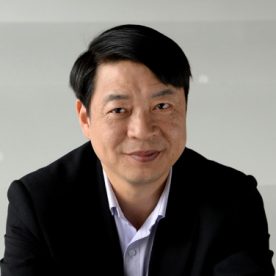
2017 winner — Innovation Award
Professor Mike Xie FTSE
Professor Mike Xie developed the widely used evolutionary structural optimisation (ESO) and bi-directional evolutionary structural optimisation (BESO) methods. The ESO/BESO technique was inspired by naturally occurring structures such as bones, shells and trees which acquired excellent properties through an evolutionary process of “survival of the fittest”.
The original ESO technique, first proposed by Professor Xie’s team in 1992, was based on the simple concept of gradually removing inefficient material from a structure so that the resulting shape would evolve towards the optimum. A more robust technique known as BESO, which was introduced by Professor Xie’s team a few years later, allows material to be removed and added simultaneously by redistributing the under-utilised material to the most needed locations.
Among many other applications, the ESO/BESO technique can be used to significantly reduce the weight and the associated energy consumption of motor vehicles and aircraft and to produce strikingly elegant designs of bridges and buildings.
Since the inception of ESO/BESO in the early 1990s, Professor Xie has worked tirelessly on the continuous improvement and practical applications of the technique. He is recognised globally as the most important contributor to the original development and subsequent world-wide adoption of the ESO/BESO technology.
His first paper on ESO, published in 1993, has attracted over 1200 citations by researchers and practitioners in diverse fields including engineering, architecture, biomedicine and materials science. Professor Xie has also produced two books (one published by Springer-Verlag in 1997 and the other by John Wiley in 2010) which have facilitated the widespread adoption of ESO/BESO.
Over the past 12 years, Professor Xie led a team at RMIT to develop a sophisticated software package called BESO3D. This computer code has been used by a large number of engineering/architectural firms and research institutions around the world including Bollinger und Grohmann Ingenieure (Germany), Studio Vitone & Associati (Italy), Kraft-Vaerk Architects (Denmark), BVN Architecture (Australia), University of Manchester (UK), Chalmers University (Sweden), Tsinghua University (China), Aristotle University of Thessaloniki (Greece), University of Oulu (Finland) and Harvard Graduate School of Design (USA).
Currently there are 343 registered licences of the BESO3D software in 47 countries. The software has been used to design a wide range of efficient structures and novel products.
By integrating the ESO/BESO technique with the 3D printing technology, Professor Xie has invented and fabricated a series of metamaterials with unusual mechanical properties including negative Poisson’s ratio and negative linear compressibility. Several patent applications have been lodged, including a PCT international patent application which has now entered the National Phase in USA, European Union, India and China.
The Clunies Ross Award for Knowledge Commercialisation (2017-2022) recognises an individual or small team responsible for the discovery, development and adoption of a technology and for sharing their knowledge leading to successful commercialisation.
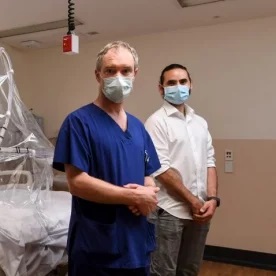
2022 winners - Knowledge Commercialisation
Professor Jason Monty and Dr Forbes McGain
Associate Professor Forbes McGain is an intensive care physician and anaesthetist at Western Health. Professor Jason Monty is head of the University of Melbourne’s Department of Mechanical Engineering and an expert on fluid dynamics, with specific expertise in aerosol transport.
In March 2020, Forbes contacted Jason asking for assistance in protecting the safety of healthcare workers attending to patients infected with COVID-19. Forbes’ idea was for something like a pram’s rain hood that could be placed over the head and torso of an infected patient to contain the virus particles.
The Medihood is the result of this unique collaboration. It protects healthcare workers and nearby patients from COVID-19, and other infectious respiratory diseases, by containing and filtering the infectious air expelled by a patient, while also improving patient outcomes.
Despite the timeframe of less than 12 months, the scientific rigour expected of high quality technological science and engineering research projects was maintained.
Forbes and Jason directed a team including colleagues from the University of Melbourne departments of Mechanical Engineering, Earth Sciences, and Infectious Diseases, along with medical, nursing, and physiotherapy specialists from Western Health, and additional experts from CSIRO’s Oceans and Atmosphere team and the Doherty Institute for Infection and Immunity.
Melbourne-based flag manufacturer Evan Evans was appointed product development and commercialisation partner, convinced of the efficiencies it could achieve by re-purposing its flag-making technology to manufacture the Medihood.
The multi-award-winning Medihood is already being used in more than 145 hospitals around Australia and has also been adopted internationally.
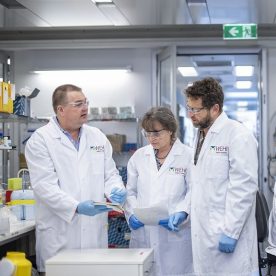
2021 winners — Knowledge Commercialisation
Professor Anne Voss, Associate Professor Tim Thomas, Jonathan Baell
Professor Anne Voss, Associate Professor Tim Thomas and Professor Jonathan Baell have developed an entirely new approach to cancer treatment that essentially puts cancer cells to sleep, without the harmful side effects caused by conventional therapies.
Cancer is a leading cause of death worldwide, accounting for nearly 10 million deaths in 2020. It kills through unrestrained and abnormal cell proliferation. The team from the Walter and Eliza Hall Institute and Monash University has developed a new class of inhibitors which arrest that proliferation, without causing DNA damage.
A licensing deal with a major pharmaceutical company, has the teams’ discoveries at its base with a drug that has now entered Phase 1 clinical trials.
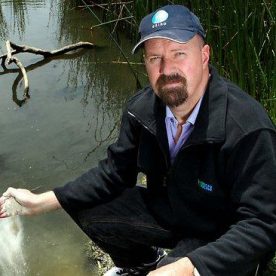
2020 winner — Knowledge Commercialisation
Dr Grant Douglas
Phosphorus run-off from fertiliser can cause major algal blooms that deplete water oxygen levels, and can cause fish die-offs, threaten fish farms and compromise fresh drinking water supplies.
Dr Grant Douglas from CSIRO Land & Water has developed and patented a new phosphorus-adsorbent clay, Phoslock™, which addresses the source of harmful algae.
Dr Douglas has proved Phoslock™ effectively removes phosphorus without any lasting effects or adverse impact on the environment.
Now, the product is used in more than 20 countries to control and prevent algal blooms. And Phoslock™ is the core product for a $750M ASX-listed company.
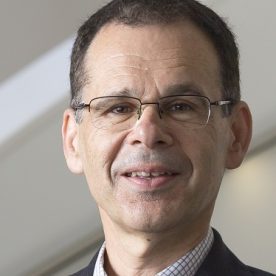
2019 winner — Knowledge Commercialisation
Professor Anthony Weiss AM FTSE
Professor Anthony Weiss’s innovative work on tropoelastin and elastin – the unique biological ingredients that give human tissue its elasticity – led to his invention and subsequent commercialisation of a polymer biomaterial – a kind of synthetic skin – for the treatment of scars and the repair of wounds.
The Australian spin-out company he founded, Elastagen, was acquired by Allergan, one of the world’s 20 largest biopharmaceutical companies, in one of the largest transactions ever completed in the Australian life science sector.
The large trade sale of Elastagen will bring direct financial benefit to Australia, delivering tax revenue to the government and returning a substantial portion of the USD$260 million proceeds to Australian superannuation funds and venture capital firms that took the risk of investing in early-stage technology commercialisation.
This will have a multiplier effect, increasing confidence among venture capital firms, funds and venture-capital backed companies in investing in the next generation of life science technologies.
This success story is also a win for government policy. For many years federal and state governments have been attempting to increase Australia’s capacity for commercialising innovation through university-industry partnerships. The joint endeavours of Professor Weiss and Elastagen are an exemplar to the world of what our research and biotechnology sectors can achieve.
Their success story has been used by Austrade to encourage overseas investment, by the Department of Industry, Innovation and Science as a case study, and by the NSW Ministry of Health to promote the success of its Medical Devices Fund, which helped fund the work.
Within Australia the story has helped educate the public about the tangible benefits of scientific research, and, incidentally, government investment in it. Professor Weiss has given scores of interviews and featured in hundreds of national and regional media stories, including in every major TV, radio and newspaper outlet.
Public awareness of his scientific achievements received a substantial boost earlier this year when he was made a Member of the Order of Australia.
Professor Weiss was unfortunately unable to attend the event due to illness. He was represented on the night by one of his PhD students, Richard Wang.
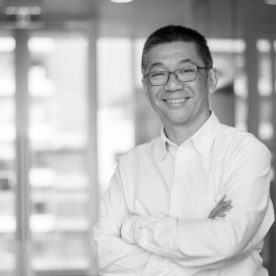
2018 winner — Knowledge Commercialisation
Professor David Huang
Professor David Huang and collaborators Associate Professor Peter Czabotar, Associate Professor Guillaume Lessene and Professor Andrew Roberts are recognised for their role in the development of a novel, potent anti-cancer drug called venetoclax.
The drug, discovered in collaboration with Genentech, a member of the Roche Group, and AbbVie, was recently approved for use in the US, Europe and Australia to treat certain forms of chronic lymphocytic leukaemia (CLL).
Derived from a basic research discovery in the late 1980s at the Walter and Eliza Hall Institute, the team’s findings helped to solve a problem that eluded international research efforts: inhibiting a family of pro-survival proteins called BCL-2.
The solution involved expertise from each collaborator: Professor Huang led research unravelling the basic biology of the protein family; Associate Professors Lessene and Professor Czabotar focused on drug design and discovery; and Professor Roberts led translational and clinical research to establish its effectiveness in patients. They demonstrated that BCL-2 inhibitors had the potential to be exploited as an anti-cancer treatment.
Pioneering clinical trials of venetoclax began in Australia in 2011 and saw outstanding results for patients. Some 79 per cent of people involved in two early phase clinical trials reported in 2016 had a promising result to the treatment. Both studies saw remissions in patients with advanced CLL for whom conventional treatment options had been exhausted.
The social impacts of this drug will be enduring, benefiting patients and the health system and fuelling further investment and employment in the research sector – basic and translational.
In July 2017, the Walter and Eliza Hall Institute of Medical Research completed a landmark deal, selling a part of its royalty rights in venetoclax for up to $US325 million. A portion of this income is being used to enhance and accelerate the discovery of new medicines, ensuring more cutting-edge medical research at the Walter and Eliza Hall Institute can be translated.
The drug is now undergoing clinical trials to test its effectiveness in treating other types of cancer, with the hope it will benefit more patients in the future.
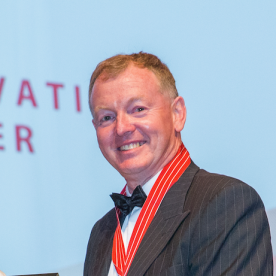
2017 winner — Knowledge Commercialisation
Darryn Smart
From 2007–12, 14 ADF personnel were killed by IEDs – over a third of all casualties in Afghanistan during that period. The number of injured personnel is estimated to be much higher.
The risks associated with IEDs and a lack of protection also hinders operational movement of military personnel. Over seven years, Mr Smart and his team have designed, developed and produced devices to protect personnel and equipment from radio-activated IEDs. His research addressed three challenges.
In 2010, Mr Smart’s team began a design and development program for a personal force protection electronic counter measure (FPECM) to protect soldiers against IEDs. Previously, one large FPECM device was carried by a soldier to protect the group within a defined area. Mr Smart’s team developed the world’s first effective personal protection device that was light enough to be worn by each soldier.
He developed and tested the technology, collaborating with the then Defence Materiel Organisation (DMO) and Australian businesses to commercialise. By mid-2011, 1100 units were supplied to the ADF and Australia became the first Coalition partner able to protect their soldiers in this way and enhance their freedom of movement. A further 1000 units were sold to US troops in 2012. No ADF personnel have died from radio-activated IEDs since 2012.
In 2012, Mr Smart was challenged to develop devices that were effective against an IED class but could be used by partner countries with limited FPECM capability, without fear of exploitation by hostile forces. The devices had to be simple to use, cheap and quick to manufacture.
He and his team used their deep understanding of signal processing and systems engineering to develop a fit-for-purpose product. Two devices were developed: Greengum, a compact personal protection unit; and Greygum, a unit to protect light vehicles.
Australian industry production began late-2014 and 105,000 units were sold and delivered to Afghanistan Security Forces in June 2015, with another 55,000 units in 2016. These units are used by Afghani army and police personnel operating in the danger areas.
In 2013, a threat emerged in operational theatres for which the ADF had no existing countermeasures. The existing protection system, fitted to vehicles, was provided by a supplier from a Coalition partner country but was unable to address this threat. The ADF either had to purchase new equipment or modify the existing system.
Mr Smart led a rapid development and testing phase for a countermeasure technique – a new device and new software – which integrated with the existing system and effectively protected troops.
He built 20 units in-house for immediate deployment within three weeks. He then oversaw, with DMO, the manufacture and testing of another 30 units over three months. This extraordinary effort effectively protected ADF personnel 1-2 years earlier than if a new system had been purchased and saved the ADF $5 milliion, with ongoing savings of $1-2 million a year.